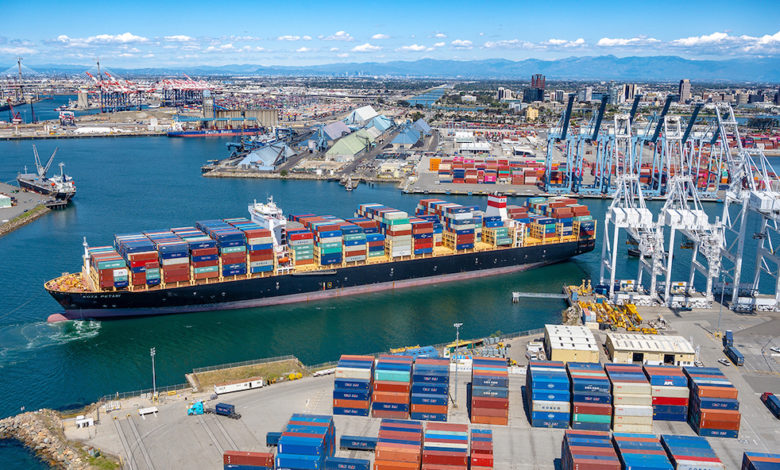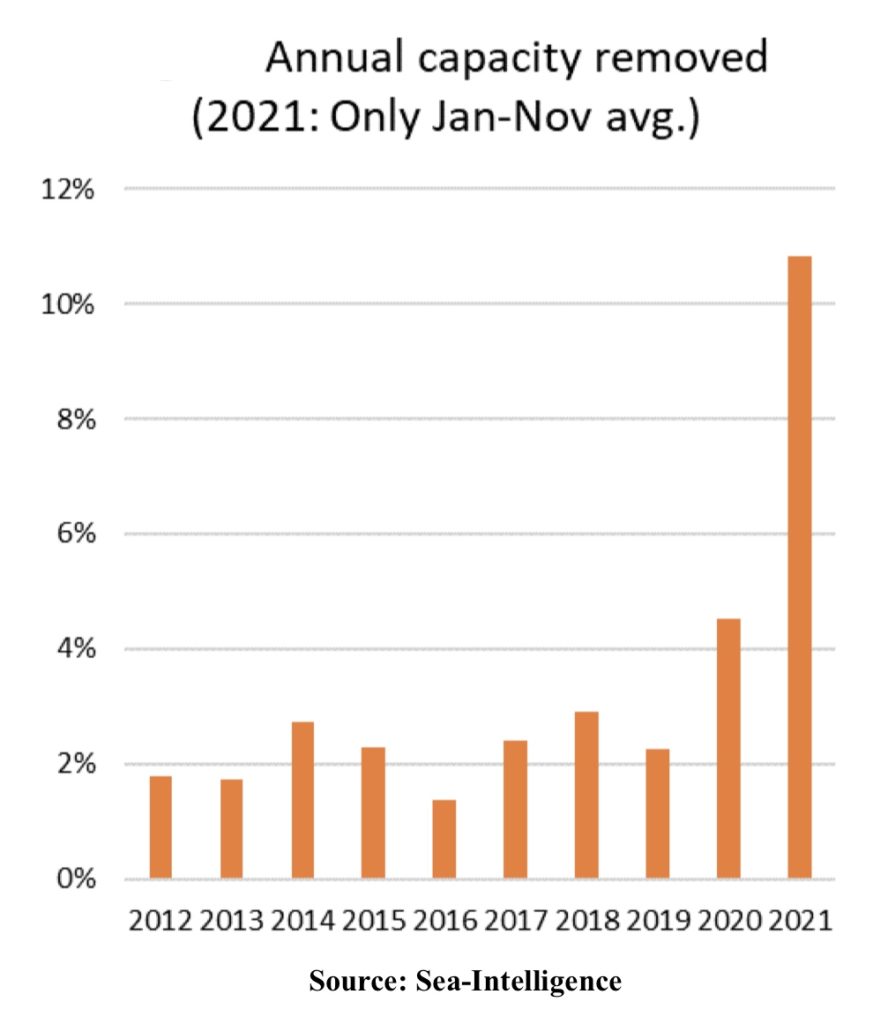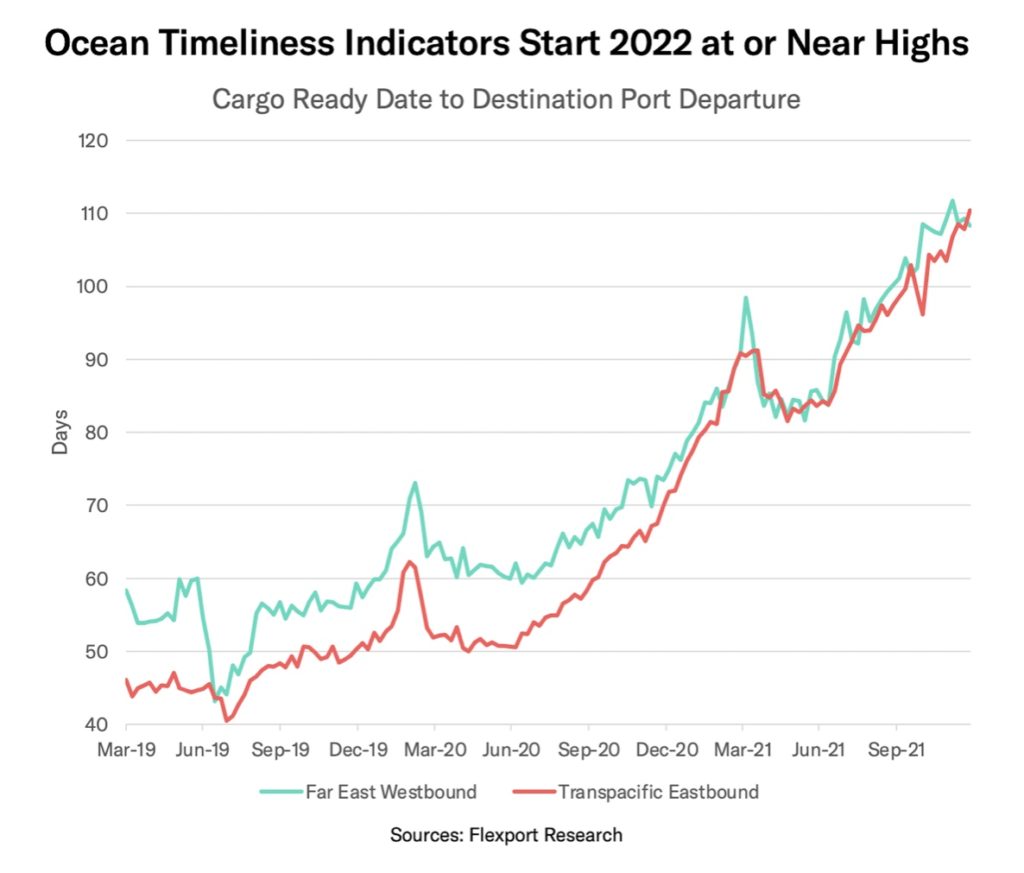Containers taking twice as long to reach their destination compared to pre-pandemic period

New data shows how much longer containers are taking to reach their destination on the main east-west tradelanes, helping explain the port snarl-ups seen across the world over the past year.
San Francisco-based freight forwarding and customs brokerage Flexport provides a weekly measurement called the Ocean Timeliness Indicator, which measures the time taken from the moment cargo is ready from the exporter until the importer takes delivery.
On the transpacific eastbound, the average time in 2019 prior to the pandemic was 45 to 50 days. The latest measurement on January 2 2022 was a new record high of 110 days.
Congestion and bottleneck problems are worsening getting into 2022
Similarly for Asia to Europe, the pre-pandemic average transport time was around 55 to 60 days, whereas the situation on January 2 was 108 days.
“This extreme increase in transportation time leads to a similar large increase in the demand for containers – simply because each container is tied up much longer than usual,” analysts from Sea-Intelligence pointed out in their latest weekly report.
Sea-Intelligence data shows that pre-pandemic typically 2% of containership capacity was caught up in delays, a figure that shot up to 11% in 2021.
Early indicators this year show that congestion is far from improving.
“All the available data shows that congestion and bottleneck problems are worsening getting into 2022,” Sea-Intelligence warned.

“Port congestion and inefficiencies remain an ongoing issue resulting in everything from vessels slow steaming, vessels being diverted to different ports, containers being uncirculated, and longer unloading times by onshore workers. COVID is still boosting consumer spending on goods, and we believe rates will hit new record highs in the coming weeks,” a new shipping report from investment bank Jefferies stated today.


This is indeed the fact longer transit times, more surcharges all around, no empty returns, demurrage charges, detention charges. This is totally outrageous. How can small business survive, the global governments should be stepping in an make a new law all around. I used love job at this pace with all delays an all it is no more fun.